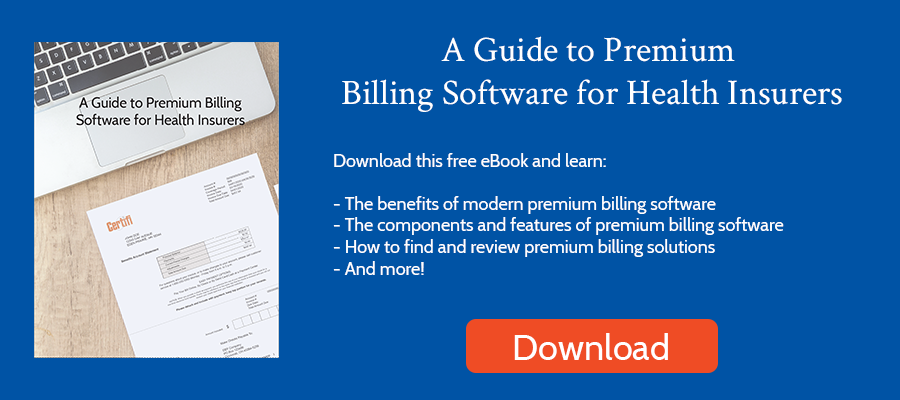According to recent U.S. Bureau of Labor Statistics data, in May 2023, nearly 100,000 employees in the finance and insurance industries quit their jobs, representing a 1.4% turnover rate. Annualizing that number means as many as 17% of employees in finance and insurance quit their jobs annually.
That turnover has a cost. When an employee leaves, there are direct costs like recruitment, training, and lost productivity as a new employee gets up to speed. Indirect costs include a loss of knowledge, an increased risk of error, and even damage to morale if turnover is high. Experts estimate the total turnover cost is as high as two times the employee’s annual pay.
Health insurance billing teams are highly susceptible to employee turnover. Typically health insurers see billing specialists as an entry-level position with limited educational or previous experience required. Pay can be low and daily activities can be highly manual, like reconciling payments or reviewing files. It’s also generally a low-paid position that may require long hours during specific times of the month or year.
Turnover in the billing department can impact the customer and member experience, leading to increased billing errors. Those errors may cause customer churn, impacting an insurer’s bottom line.
With that in mind, here are four tips to help reduce billing employee turnover in the health insurance industry:
Identify Why Employees Churn to Reduce Billing Employee Turnover
First, identify why employee turnover occurs. Understanding why employees leave can help create strategies to encourage them to stay. You can do that with:
- Exit Interviews – Conduct interviews to gather their feedback. Ask why they left, their overall experience with the company, and any issues or concerns they may have had during their tenure.
- Stay Interviews – These interviews can help you understand current employee satisfaction levels, motivations, and what they like and dislike about the role and organization.
- Employee Surveys – Anonymous employee surveys can deliver data about job satisfaction, the work environment, management effectiveness, and more.
- Management Interviews – Interviewing managers and supervisors can help you get management’s perspective on the potential reasons for turnover.
Once you’ve got some data, analyze it to determine why turnover occurs in your billing department. Then, brainstorm ways to counteract turnover.
Invest in Employee Training and Development
Employees want training and development opportunities – especially young, entry-level employees. They want a career, not a job. Here are a few ideas and programs that will develop your billing team:
- Onboarding – Poor onboarding performances lead to negative first impressions that can be hard to overcome. Ensure your onboarding program helps new employees acclimate to their role, introduce the company culture, and welcome and support new staff.
- Continuous learning opportunities – Offer employees regular training, workshops, and webinars to enhance their skills and knowledge.
- Mentorship Programs – Find experienced employees in your department to mentor new and inexperienced employees. Mentorship can foster a sense of belonging faster than traditional onboarding and management structures.
- Performance Management and Feedback – Goal setting and regular performance feedback help employees understand their roles and expectations. Goal attainment can also boost morale compared to companies with less defined goals.
- Cross-Training – Many managers are understandably concerned about cross-training employees in other departments because they fear they’ll leave. But cross-training can also improve their skills and understanding of key business processes and people that can be valuable within the billing department.
- Recognition Programs – Reward employees for achieving goals or exhibiting company values. Many employees won’t admit it, but recognition of their work is often more valuable than pay increases.
- Flexibility and Work-life Balance – Happy employees are less likely to leave. Don’t be afraid to offer flexible work arrangements. As long as you can monitor work and goal progress, does it matter where and when the employee completes work? Outside core billing processes, work can usually be completed remotely and during non-business hours. Employees consistently value companies that offer remote work opportunities.
Address Pay and Advancement Concerns
Often, employees leave for better pay and to advance their careers. So ensure you’ve created programs to address these potential concerns, including:
- Compensation Reviews – Regularly conduct reviews to ensure you fairly compensate employees based on their performance and value to the organization.
- Conduct Regular Market Analysis – Conduct regular market surveys and benchmark your salaries against other comparable jobs and organizations. Tools like Glassdoor, Payscale, and Salary.com can help.
- Performance-based Pay – Performance-based pay or bonuses can help reward high-performing employees and minimize their likelihood to churn. It also provides incentives that can improve overall business performance.
- Internal Promotions – The best path to increased salary is through promotion. Always consider internal promotions before seeking outside employees.
- Clear Advancement Paths – Finally, establish and communicate clear advancement paths for employees so they know how to earn promotions and additional pay.
Leverage Premium Billing Software to Limit Manual Work
The tools and tasks employees use and perform can determine their job satisfaction. Insurers using multiple billing platforms, underperforming legacy systems, or manual reconciliation and retroactive processes may be alienating their employees.
So consider leveraging modern health insurance premium billing software designed to automate billing processes and reduce billing employee turnover. Not only will it free up staff for more engaging work, but it will also reduce human error while increasing customer satisfaction.
Certifi’s health insurance premium billing and payment solutions help healthcare payers improve member satisfaction while reducing administrative costs.



